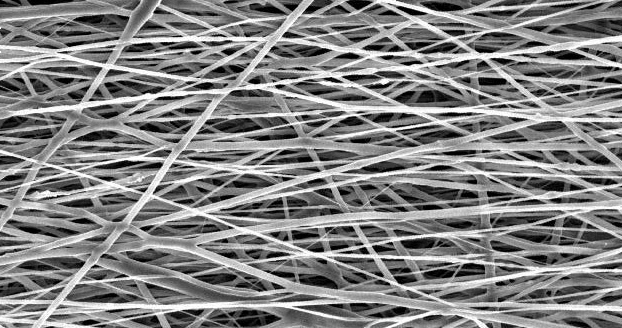You have lived long enough to realize that the vast majority of aches and pains, even if initially severe, usually get better on their own.
Vast majority of aches and pains - but not all.
You also have observed that most superficial wounds heal in about a weak - hence it is understandable that you took a week off and expected to see an improvement.
But from your response to WildVolley I assume you have pain in the area consistent with "golfer's elbow".
Golfer's elbow, just like tennis elbow that occurs on the other side of the forearm near the elbow, involves either one, or more commonly many, small tears in the tendon:
Tendon is very dense protein that almost resembles a strong rope.
The way the body repairs a tendon is by the process of "inflammation and repair".
Inflammation means that white blood cells are attracted to the site of the injury.
The white blood cells make chemicals (cytokines) that attract the type of cell (fibroblast) that will make the protein to repair the tear.
The trouble is that the protein strands that are made by these cells are incredibly small. It takes millions of these little strands to bind together to heal the tear.
These little protein strands resemble the protein strands that make up a spider's web.
From the Spiderman movies we all know that a spider's web is stronger than steel, ounce for ounce.
But we also all know that to break up a spider's web, we only need to wiggle our finger in it.
It takes many weeks for these isolated strands to become "crosslinked" and form a strong tendon again that is as strong as rope or cable.
What you are doing by continuing to play is break down the protein strands as you forcefully swing your racquet - this force is way more than the force of a finger in a spider's web breaking down thin, healing protein strands.
Every time you break these protein strands down, the body has to start all over to heal the area.
You elbow area is living the same problem over and over day after day, like in the movie Groundhog Day.
And why the continued pain?
The inflammation phase usually lasts just long enough for the white blood cells to recruit the cells that make the protein (fibroblasts) to the the injured site.
Again, they recruit the protein building cells by secreting chemicals (cytokines) to the area.
The main job of the chemicals is to attract the protein building cells there, but a side effect is that these chemicals are that they irritate nerve endings - hence pain.
Because you have broken down these healing areas so often, there is a much larger number of white blood cells making a lot more chemicals at the site to finally make enough protein strands to heal the area.
[Be warned: if the inflammation goes on too long, the chemicals will actually start to break down surrounding tissue, resulting in degeneration/fibrosis of the tendon, and it will never go back to normal.]:
So do yourself a favor and REST.
Go see that doctor who can give you individual care based on exactly what is wrong for you, and can outline a gradual increasing amount of physical therapy.
A few words on physical therapy.
The first sessions of "exercise" are not to strengthen the muscle/tendon area.
They are just to keep the tendons sliding past one another in a normal fashion.
Otherwise the process of inflammation ends up with tendons and muscles "glued together" by all those excess protein strands, so the tendons and muscles don't glide smoothly any more.
Only when almost all the pain goes away can actual strengthening begin.
And if there is a return of pain, you have hod off on exercise for a time, then begin again.
I hope this helps!


.jpg)


